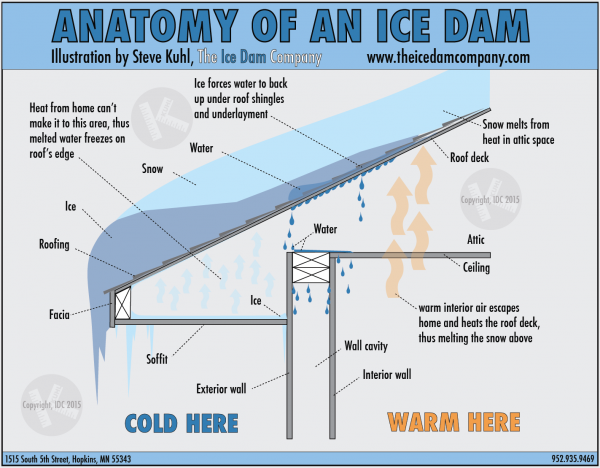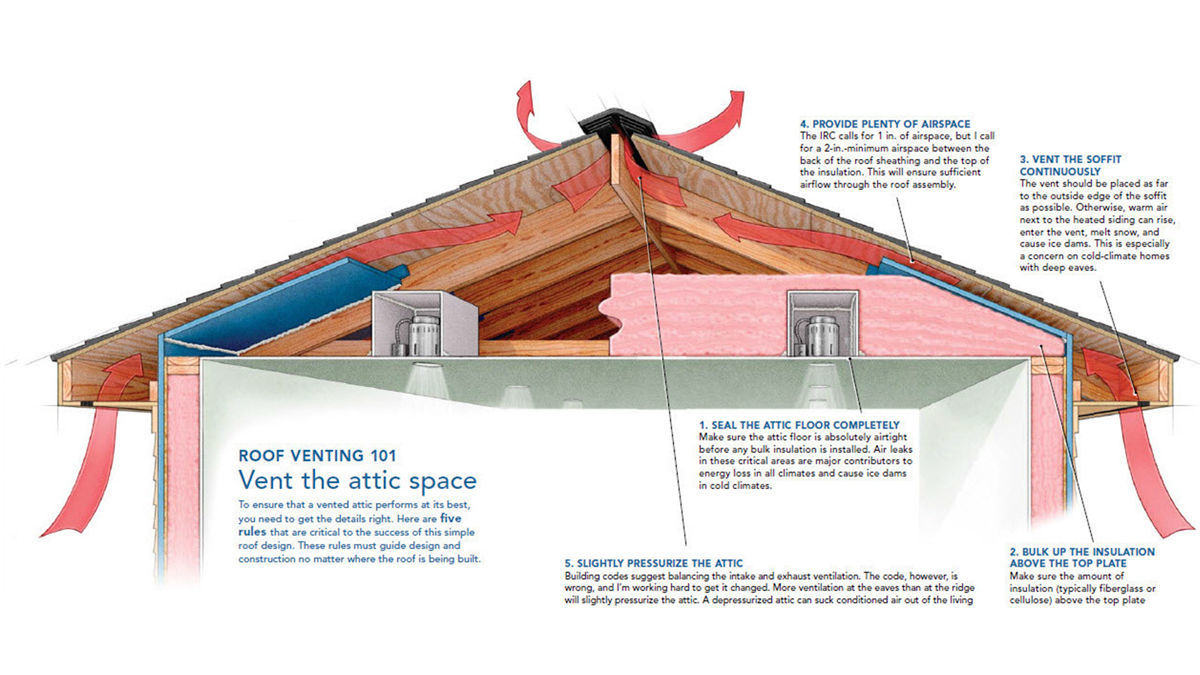Anatomy of an Ice Dam
Ice dams are ridges of ice that form along the edge of a roof, preventing melting snow from draining off. They typically occur after a heavy snowfall, followed by fluctuating temperatures, created when warm air from inside the home rises and heats the underside of the roof, causing snow to repeatedly melt, flow down to the colder eaves, and refreeze. As these ice ridges grow, they can cause water to pool behind them and seep under shingles or other roofing materials, leading to damage inside your home.
Potential Consequences
- Water infiltration: As the ice dam prevents melting snow from draining, water can seep under shingles, through the roof deck, and into the attic or living spaces. This can result in water-stained ceilings, damaged drywall, and weakened structural components.
- Damaged roofing materials: The weight of an ice dam, along with the pressure from trapped water, can cause shingles to lift, crack, or break, leaving the roof vulnerable to leaks and further damage.
- Rotting wood: Prolonged exposure to moisture can cause the wood in the attic, roof, and exterior walls to rot, compromising the structural integrity of your home.
- Damaged insulation: Wet insulation loses its ability to insulate properly, increasing heat loss and energy consumption. Additionally, wet insulation can harbor mold and mildew, posing health risks to occupants.
- Mold and mildew growth: Persistent moisture from ice dam-related leaks can lead to the growth of mold and mildew within your home. This can negatively affect indoor air quality and cause respiratory issues, allergies, and other health problems for occupants.








